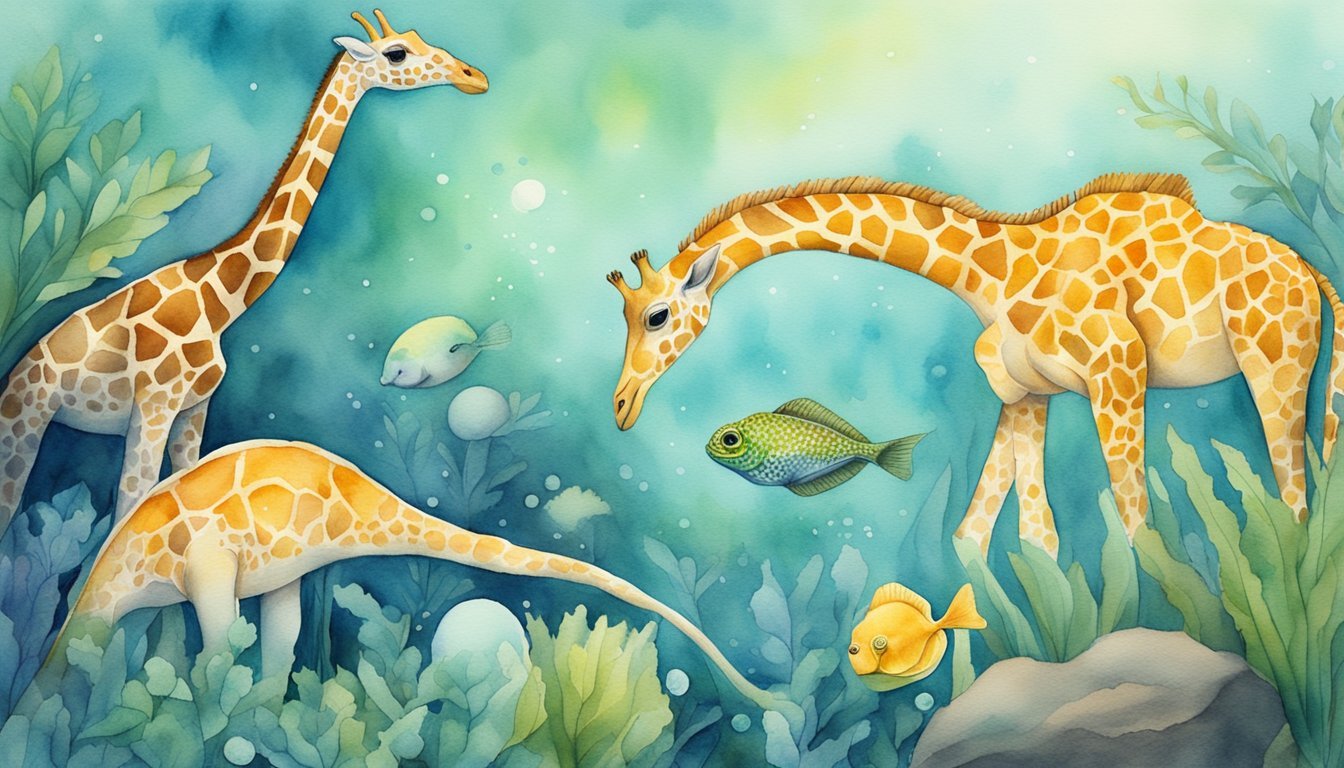Striking Adaptations in the Animal World

Echolocation and Wings
Bats are known for their incredible ability to use echolocation for navigating and hunting in the dark. The vampire bat, for instance, is a highly specialized mammal that feeds on blood, and has a wingspan of about 8 inches. These bats are equipped with sharp claws to help them latch onto the prey, such as cows or birds, while they feed. A friendlier cousin is the flying fox, which despite its spooky name, eats fruits and boasts a wingspan of around 4.5 feet.
Another intriguing example is the aye-aye, a nocturnal lemur from Madagascar. This endangered species uses its unusual elongated finger to tap on trees and employs echolocation to locate insect larvae hidden inside the bark. The aye-aye, just like bats, also has an impressive wingspan that helps it travel between trees efficiently.
Unique Breeding Habits
The stunning yet horrifying breeding habits of some animals are truly fascinating. The Surinam toad, for one, has one of the most bizarre methods of reproduction. The female toad embeds fertilized eggs into her back, which then grow beneath her skin. After a few months, fully-developed young toads rupture through her skin and swim away independently.
Another unusual breeder is the golden poison dart frog. Found in the rainforests of Colombia, this vibrant animal is considered one of the most lethal amphibians. Although beautiful, a single touch from these frogs can be fatal due to their highly toxic skin. But despite this dangerous attribute, the adult frogs show a great sense of parental care as they carry their tadpoles on their backs and deposit them in small water pools for further development.
Defensive Mechanisms
Some animals have developed remarkable ways of defending themselves from predators. For example, the Icelandic horned lizard employs a unique and unsettling strategy when threatened: it shoots blood from its eyes. The sudden sight of blood startles and confuses the predator, giving the lizard an opportunity to escape.
Constipated sea cucumbers, found in shallow waters and on the seafloor, also employ a bizarre defense method. When faced with danger, these creatures expel their internal organs as an evasive tactic. This disgusting act confuses attackers and allows them to escape, and remarkably, they can regenerate the discarded organs later on.
From echolocation to peculiar breeding habits and impressive self-defense techniques, the animal world is full of fascinating adaptations that help them survive in their various environments. These striking features showcase not only their incredible resilience but also the extraordinary diversity of life on our planet.
Deadly Encounters and Unusual Diets
Carnivorous Surprises
Despite their seemingly innocent looks, some creatures in the animal kingdom have surprisingly carnivorous diets. Sea otters, for example, are known for their adorable appearance, but they are also skilled predators that feed on various marine species. Even the slow-moving sloth hides its dark side: on rare occasions, it can catch and eat birds or small mammals. Similarly, the platypus, despite looking harmless, possesses sharp claws and a venomous spur that is capable of delivering a painful sting when threatened.
Bizarre Feeding Methods
Some animals have developed unique and bizarre methods to procure their meals. The ant-eater uses its long, sticky tongue to extract insects from their nests, while the star-nosed mole uses its specialized nose to locate and catch small invertebrates in its underground tunnels. The Komodo dragon, found in the Amazon rainforest, kills its prey with a lethal toxin produced in its saliva, causing its victim to bleed to death.
An even more unusual provider of sustenance is the tongue-eating louse, a parasitic crustacean that replaces the tongue of its host fish by attaching itself to the stub and feeding on the fish’s blood. Surprisingly, the fish can still use the louse as a functional tongue.
Unsuspecting Predators
Sometimes, the most unassuming creatures turn out to be predators. The satanic leaf-tailed gecko employs an impressive camouflage to blend in with its surroundings, remaining hidden from both predators and prey. Its ability to ambush unsuspecting insects is what makes this gecko a formidable hunter.
A number of other surprising predators lie in wait throughout the animal world. The electric eel, for example, is capable of producing a powerful electric shock to incapacitate its prey – sometimes even fatal to humans. The goblin shark displays a horrifying, protruding jaw to snatch its victims, while the goliath birdeater, despite its name, primarily feasts on arachnids and insects such as black widow spiders.
Furthermore, the animal kingdom is rife with predators displaying deceptive appearances, such as the oxpeckers that, despite their symbiotic relationship with large mammals, occasionally drink the blood of their hosts.
In conclusion, the world of disturbing animal facts encompasses a variety of deadly encounters and unusual diets. From surprising carnivores to bizarre feeding methods and unsuspecting predators, these creatures provide a fascinating and sometimes frightening glimpse into the complexities of the natural world.

